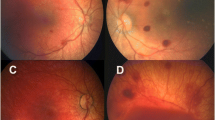Abstract
Since the incidence of shaken baby syndrome in Switzerland was not known, we conducted a nationwide prospective follow-up study for a 5-year period (from 2002 to 2007). The data were collected through the Swiss Pediatric Surveillance Unit. Inclusion criteria were the presence, in a child ≤6 years of age, of 1) more than or equal to two clinical symptoms (altered consciousness, convulsions, respiratory irregularities, and bulging fontanel), 2) one eye finding (retinal hemorrhages, vitreous hemorrhages), 3) one MRI/CT finding (subdural hematoma, subarachnoid hematoma, and parenchymatous lesions), or 4) history of shaking. Exclusion criteria were age >6 years or documented accident/disease explaining symptoms/findings. To describe outcome, we used the King's Outcome Scale for Childhood Head Injury (KOSCHI). 56 cases were reported from 13 of 26 Swiss cantons, representing 80% of the Swiss population; 49 cases met the inclusion criteria. Preponderance of male infants was high (31 male and 18 female); median age at admission was 4 months (1–58). Clinical symptoms were present in 42 infants, retinal/vitreous hemorrhages in 39 infants, and pathological brain/head imaging in 46 infants. In 13 cases, the caregivers admitted shaking the child. Outcomes (KOSCHI 1–5; n = 47 patients) were death (KOSCHI 1) 8 (17.7%), vegetative state (KOSCHI 2) 0, severe disability (KOSCHI 3) 11 (22.2%), moderate disability (KOSCHI 4) 14 (31.1%), and good recovery (KOSCHI 5) 14 (28.8%). Based on these data, the incidence of shaken baby syndrome in Switzerland is 14 per 100 000 live births, which corresponds to the incidence in other Western countries. Demographic characteristics and outcomes of Swiss patients were comparable to published studies.


Similar content being viewed by others
References
Barlow KM, Minns RA (2000) Annual incidence of shaken impact syndrome in young children. Lancet 356:1571–1572
Barr GR, Trent RB, Cross J (2006) Age-related incidence of curve of hospitalized Shaken Baby Syndrome cases: convergent evidence for crying as a trigger to shaking. Child Abuse Negl 30:7–16
Bechtel K, Stoessel K, Leventhal JM (2004) Characteristics that distinguish accidental from abusive injury in hospitalized young children with head trauma. Pediatrics 114:165–168
Betz P, Puschel K, Miltner E et al (1996) Morphometrical analysis of retinal hemorrhages in the shaken baby syndrome. Forensic Sci Int 78:71–80
Crouchman M, Rossiter L, Colaco T, Forsyth R (2001) A practical outcome scale for paediatric head injury. Arch Dis Child 84:120–124
Duhaime AC, Gennarelli TA, Thibault LE et al (1987) The shaken baby syndrome: a clinical, pathological, and biomechanical study. J Neurosurg 66:409–415
Gerber P, Coffman K (2007) Nonaccidental head trauma in infants. Childs Nerv Syst 23:499–507
Guthkelch AN (1971) Infantile subdural hematoma and its relationship to whiplash injuries. Br Med J 2:430–431
Hadley MN, Sonntag VK, Rekate HL, Murphy A (1989) The infant whiplash-shake injury syndrome: a clinical and pathological study. Neurosurgery 24:536–540
Haviland J, Russell RI (1997) Outcome after severe non-accidental head injury. Arch Dis Child 77:504–507
Hettler J, Greenes DS (2003) Can the initial history predict whether a child with a head injury has been abused? Pediatrics 111:602–607
Hobbs C, Childs AM, Wynne J et al (2005) Subdural hematoma and effusion in infancy: an epidemiological study. Arch Dis Child 90:952–955
Jayawant S, Rawlinson A, Gibbon F et al (1998) Subdural hemorrhages in infants: population based study. BMJ 317:1558–1561
Jenny C, Hymel KP, Ritzen A et al (1999) Analysis of missed cases of abusive head trauma. JAMA 281:621–626
Karandikar S, Coles L, Jayawant S, Kemp AM (2004) The neurodevelopmental outcome in infants who have sustained a subdural haemorrhage from non-accidental head injury. Child Abuse Rev 13:178–187
Keenan HT, Runyan DK, Marshall SW et al (2003) A population-based study of inflicted traumatic brain injury in young children. JAMA 290:621–626
King WJ, MacKay M, Sirnick A (2003) Shaken baby syndrome in Canada: clinical characteristics and outcomes of hospital cases. CMAJ 168:155–159
Kivlin JD, Simons KB, Lazoritz S, Ruttum MS (2000) Shaken baby syndrome. Ophthalmology 107:1246–1254
Kochanek PM, Berger RP, Margulies SS, Jenkins LW (2007) Inflicted childhood neurotrauma: new insight into the detection, pathobiology, prevention, and treatment of our youngest patients with traumatic brain injury. J Neurotrauma 24:1–4
Lee C, Barr RG, Catherine N, Wicks A (2007) Age-related incidence of publicly reported shaken baby syndrome cases: is crying a trigger for shaking? J Dev Behav Pediatr 28:288–293
Ludwig S, Warman M (1984) Shaken baby syndrome: a review of 20 cases. Ann Emerg Med 13:104–107
Morad Y, Kim YM, Armstrong DC et al (2002) Correlation between retinal abnormalities and intracranial abnormalities in the shaken baby syndrome. Am J Ophtalmol 134:354–359
Morad Y, Kin YM, Mian M (2003) Nonophtalmologist accurancy in diagnosing retinal hemorrhages in the shaken baby syndrome. J Pediatr 142:431–434
Mungan NK (2007) Update on shaken baby syndrome: ophthalmology. Curr Opin Ophthalmol 18:392–397
Ommaya AK, Faas F, Yarnell P (1968) Whiplash injury and brain damage: an experimental study. JAMA 204:285–289
Ommaya AK, Gennarelli TA (1974) Cerebral concussion and traumatic unconsciousness. Correlation of experimental and clinical observations of blunt head injuries. Brain 4:633–654
Ommaya AK, Yamell P (1969) Subdural hematoma after whiplash injury. Lancet 2:237–239
Prasad MR, Ewing-Cobbs L, Swank PR, Kramer L (2002) Predictors of outcome following traumatic brain injury in young children. Pediatr Neurosurg 36:64–74
Reijneveld SA, van der Wal MF, Brugman E et al (2004) Infant crying and abuse. Lancet 364:1340–1342
Talvik I, Metsvaht T, Leito K et al (2006) Inflicted traumatic brain injury (ITBI) or shaken baby syndrome (SBS) in Estonia. Acta Paediatr 95:799–804
Acknowledgements
We thank the Swiss Pediatric Surveillance Unit and the children's hospitals in Switzerland that contributed to this study.
Author information
Authors and Affiliations
Corresponding author
Rights and permissions
About this article
Cite this article
Fanconi, M., Lips, U. Shaken baby syndrome in Switzerland: results of a prospective follow-up study, 2002–2007. Eur J Pediatr 169, 1023–1028 (2010). https://doi.org/10.1007/s00431-010-1175-x
Received:
Accepted:
Published:
Issue Date:
DOI: https://doi.org/10.1007/s00431-010-1175-x




